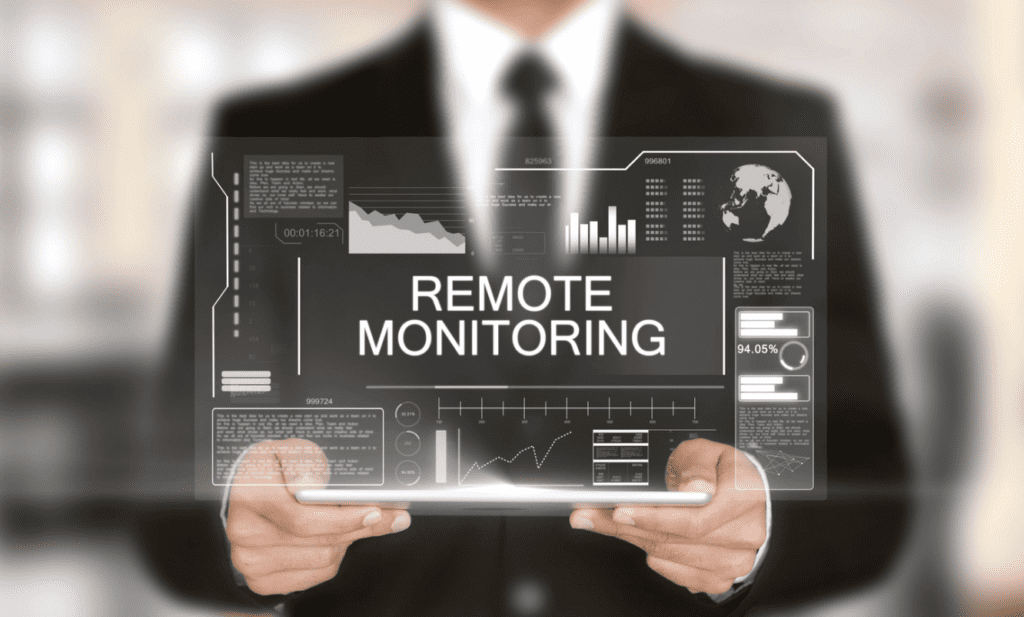Managing a team that's scattered across different locations presents unique challenges, especially when it comes to ensuring productivity. As a team leader or business owner, you might often find yourself questioning the efficiency and output of your remote workforce. Enter remote worker monitoring.
Table of Contents
With the traditional office setting becoming a thing of the past for many, the need for effective remote worker monitoring has become more pronounced than ever. These can effectively track and enhance your remote team's productivity.
However, the main aim is to ensure consistent achievement of business goals, no matter where your team works. This article aims to guide you through strategies and tools for remote worker monitoring.

So, without further ado, let’s get started!
Importance of Productivity in a Remote Setting
It’s true that you can't manage what you can't measure. The key lies in understanding that productivity in a remote environment is different. It's not about the hours your team members sit in front of their computers but the results they deliver.
It’s true that work doesn't happen simultaneously for everyone, and that's perfectly okay! In fact, you must focus on giving your team the freedom to work when they are most productive yet ensuring that collaboration remains seamless.

Here are some key points to remember with remote worker monitoring strategies:
1. Set Clear Goals and Expectations
Setting clear, measurable goals is crucial in remote work environments. As a leader, you need to articulate what you expect your team to achieve. These goals serve as a roadmap, guiding your team toward success.
Establish specific, attainable, relevant, and time-bound (SMART) objectives. This clarity in expectations aligns with your team's efforts and boosts their motivation. When your team knows what is expected, they can focus their efforts more effectively to increase productivity.
2. Enhancing Team Efficiency Beyond the Clock
In remote work, prioritizing asynchronous collaboration is crucial. It allows team members to contribute at their own pace, emphasizing outcomes over synchronous activities. This approach accommodates different time zones and schedules, fostering thoughtful communication and a healthier work-life balance.
By emphasizing asynchronous collaboration, remote teams enhance productivity, prioritizing both work quality and flexibility for individual team members, ultimately contributing to project success.
3. Utilize Time Tracking Tools
Time-tracking tools are invaluable in remote worker monitoring. They go beyond merely recording hours; they offer insights into how time is utilized. With these tools, you can identify if team members need to spend more time on specific tasks, enabling you to address potential inefficiencies.
They also help understand work patterns, which can be crucial for planning and allocating resources. Moreover, time tracking fosters accountability and self-awareness among team members and encourages them to manage their time more effectively.
4. Leverage Project Management Software
Project management software is essential for remote teams. These tools centralize information and keep everyone updated on the progress of tasks and projects.
They offer features like task assignment, deadline tracking, and progress updates, making it easier to manage a distributed team. Using these tools lets you maintain a bird's eye view of all projects, ensuring that nothing slips through the cracks.
5. Encourage Regular Check-ins
Regular check-ins are key to maintaining effective communication and alignment in remote teams. Whether it’s a daily stand-up or a weekly summary meeting, these check-ins offer a platform for team members to share their progress, challenges, and plans.
They encourage a sense of community and ensure everyone is on the same page. Additionally, regular interactions help identify any roadblocks early, allowing you to provide timely support and guidance. These check-ins also offer a moment for team members to connect personally, which is vital for team cohesion.
6. Monitor Work Output, Not Just Hours
Focusing on the quality and quantity of work, rather than just the hours, is a more effective way to measure productivity. Evaluate whether your team is meeting its targets and producing high-quality results.
This approach acknowledges that productivity is not solely about time spent but more about the value and impact of the work done. By monitoring outcomes, you encourage efficiency and innovation, allowing your team to focus on delivering results that truly matter.

7. Respect Work-Life Balance
Respecting your team's work-life balance is paramount. While monitoring productivity, it's important to avoid micromanaging, as it can lead to burnout and decreased morale.
Trust your team and provide them with the autonomy to manage their work. This trust empowers them and respects their need for a balanced life. A team that enjoys a healthy work-life balance is often more motivated, creative, and productive.
Final Words on Remote Worker Monitoring
Remote worker monitoring is all about striking the right balance. It's a blend of using the right tools, setting clear expectations, and maintaining open communication.
Remember, the goal is to empower your team to be their most productive selves, no matter where they are. Embrace these strategies, and watch your remote team thrive!
In conclusion, navigating the dynamics of remote work requires a thoughtful and proactive approach to monitoring productivity. As the traditional office landscape evolves, embracing the strategies and tools outlined in this article becomes crucial for ensuring the success of dispersed teams.
By setting clear goals, prioritizing asynchronous collaboration, utilizing time-tracking tools and project management software, encouraging regular check-ins, and focusing on work output rather than hours, leaders can foster an environment where remote teams thrive.
The emphasis on respecting work-life balance underscores the importance of trust and autonomy in maintaining a motivated and productive workforce. Striking the right balance is not only attainable but essential for empowering remote teams to deliver impactful results, regardless of their physical location.
Embrace these insights, and witness your remote team flourish in the ever-evolving landscape of work.


